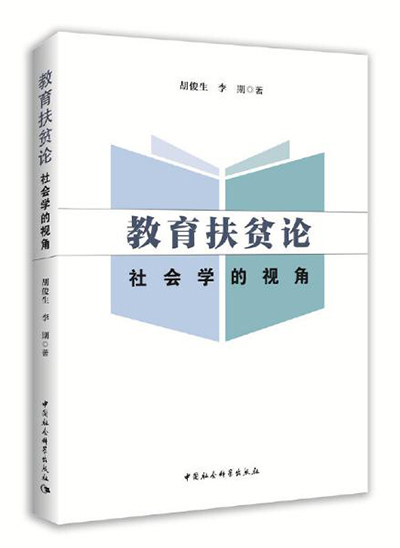Uprooting poverty through education

Poverty Alleviation Through Education from a Sociological Perspective
Promoting “targeted poverty alleviation” through “targeted training” is higher education’s main pathway to poverty alleviation. Yet what are the implementation effects and prominent problems of previous poverty alleviation efforts through education and skill training? What are the appeals and demands of the people in need and primary-level governments? What efforts have been made to assist higher education institutions? What confusion remains unresolved?
Poverty Alleviation Through Education from a Sociological Perspective, co-written by Hu Junsheng, a professor from the School of Public Administration at Yan’an University, and Li Qi, a research fellow from the School of Continuing Education at Yan’an University, responds to these questions involving higher education institutions based on social surveys.
If poverty reduction is simply satisfied from the material level, it will not last long due to short-sightedness. Nothing but education can uproot poverty. However, poverty alleviation through education should not merely consider the emergent present, but also the future. Poverty alleviation in higher education institutions is mainly aimed at young workers, which works on “tree branches” rather than “roots,” bringing out provisional effects more prominently than uprooting effects. Essentially, “pulling up roots” is not currently the prime responsibility of poverty alleviation in higher education institutions.
To truly curb and block the intergenerational transmission of poverty, it is a must to elongate the supportive chain, adopt a set of measures, move the focus of poverty alleviation downward through education, fight for poverty reduction in the stage of elementary education and even preschool education, and promote early maternal and infant intervention.
Targeted poverty alleviation in higher education institutions means playing the cards of educational training’s strengths, scientific and technological advantages, human resources, management, and think tanks, while targeted poverty alleviation through targeted training needs to locate key groups and identify the key points of efforts. Briefly, it is necessary to focus on the layout of leading industries, prioritize the training of a vanguard who are able to attain wealth and lead others, proceed from primary-level cadres as the “critical minority,” and train the young and middle-aged labor force through multiple channels, especially rural teachers and rural doctors.
Chinese society has stepped into a period of transformative development, and farmers’ lagging cultural-ethical standards cannot catch up with the rapid change of material well-being. In this context, poverty in rural areas can be interpreted as maladaptation in light of concepts, knowledge, skills, quality, and psychology. When leveraging education and targeted training to aid poverty alleviation, both aspirational cultivation and capacity training should be employed to motivate the endogenous forces of the impoverished group.
Niu Fang is a research fellow from the Institute of Sociology at the Shaanxi Academy of Social Sciences.
Edited by YANG LANLAN

 PRINT
PRINT CLOSE
CLOSE